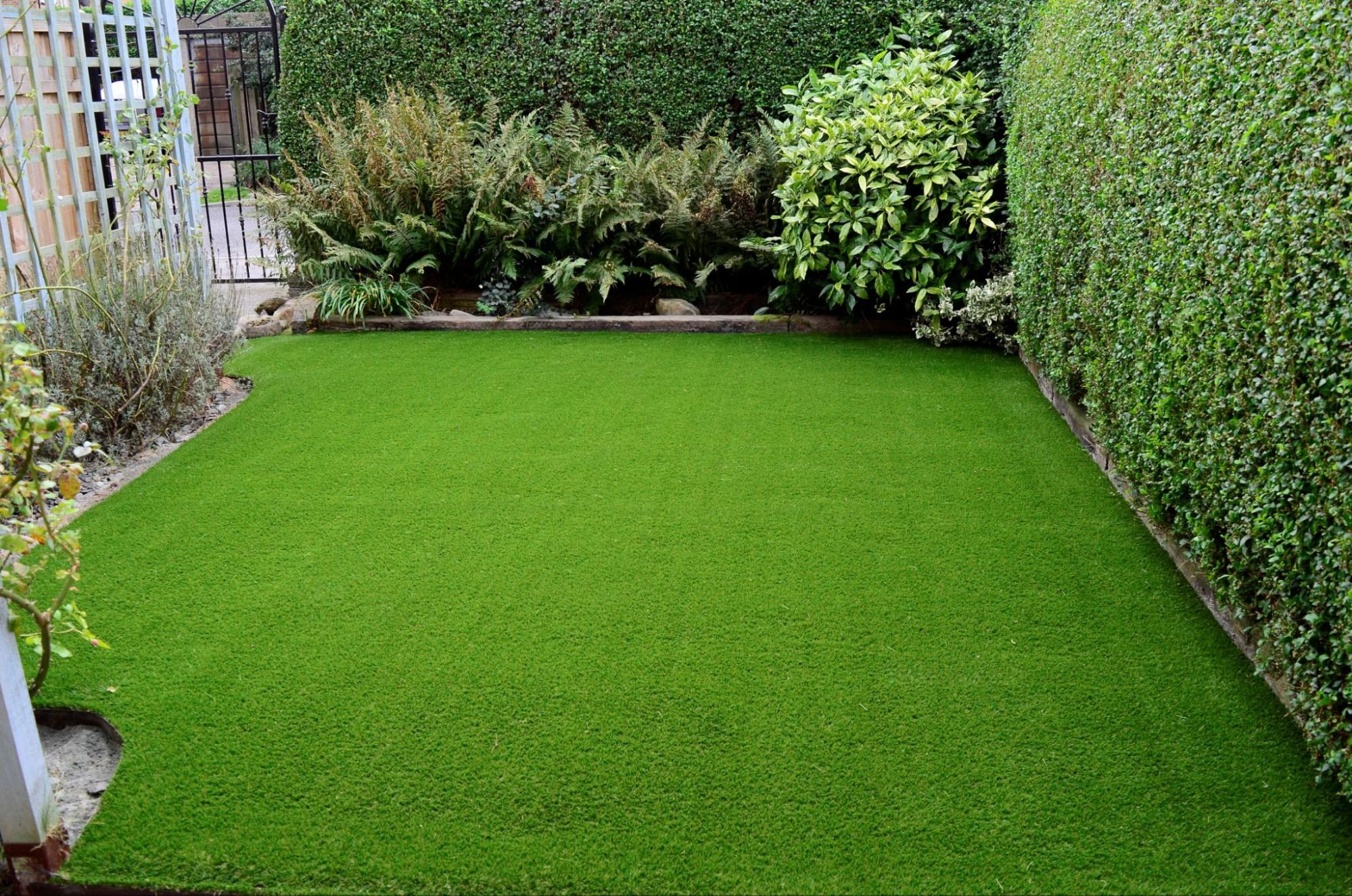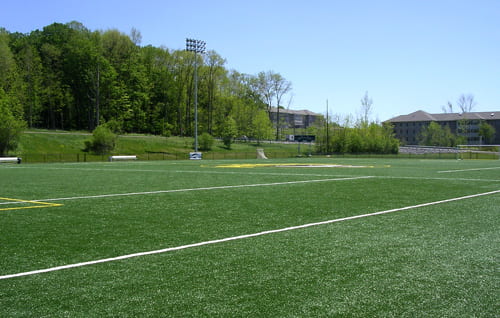See Why Homeowners Prefer Artificial Lawn for Lasting Landscaping Practices
As house owners significantly focus on sustainability in landscaping, synthetic grass has become an engaging choice to traditional turf. Its capability to save water, minimize upkeep initiatives, and lessen ecological influence placements it as a practical choice for those seeking eco-friendly services. The aesthetic appeal and versatility of artificial lawn provide to diverse layout choices. Nevertheless, the ramifications of this shift extend past simple comfort and visual appeals, prompting a more detailed examination of just how these options influence wider ecological results. What stays to be explored is the full extent of benefits that synthetic grass can provide to homeowners and the atmosphere alike.
Water Preservation Perks
One of the most significant advantages of man-made lawn is its role in water conservation. In comparison, man-made turf removes this demand entirely, as it does not call for irrigation.
Additionally, the installation of synthetic grass can add to a more sustainable landscape. Property owners can considerably reduce their water expenses, enabling reallocation of resources to various other environmental efforts or family usages. Furthermore, man-made grass is made to withstand various climatic conditions without the requirement for extra watering, making it an ideal choice for areas dealing with water shortage.
The environmental benefits extend past instant water cost savings. By reducing water consumption, synthetic grass assists to reduce the impacts of environment modification, preserving vital ecosystems that are intimidated by too much water extraction. As sustainable landscape design methods gain grip, synthetic grass becomes an accountable option for property owners seeking to develop eco-friendly exterior rooms.
Minimized Maintenance Efforts
Synthetic grass considerably lowers upkeep efforts contrasted to standard turf lawns. With artificial yard, house owners can eliminate the time-consuming jobs connected with natural landscape design, such as mowing, feeding, and weeding. This not only conserves useful time yet additionally lowers physical labor, making yard care accessible for people of any ages.
One of the most notable benefits is the lack of regular mowing. Conventional grass need constant trimming to keep a visually pleasing height, whereas man-made lawn stays continually rich without the need for cutting. Additionally, home owners no longer require to apply pesticides or plant foods, which are commonly required to maintain natural lawn healthy. This shift not just lightens the workload yet likewise advertises a neater, much more consistent appearance year-round.
In addition, artificial turf is durable and durable, needing very little maintenance past occasional cleaning and rinsing to get rid of debris. This convenience of maintenance permits house owners to enjoy their exterior rooms without the constant fear of upkeep, offering more time for leisure and family activities. Ultimately, the minimized maintenance efforts connected with synthetic grass make it an attractive alternative for those seeking a low-maintenance, visually appealing landscape.

Environmental Effect Reduction
There is an expanding acknowledgment of the environmental benefits connected with synthetic grass, specifically in regards to water preservation and reduced chemical usage. Conventional yards require significant amounts of water, especially in drought-prone regions, causing increased stress on regional water resources. On the other hand, fabricated lawn gets rid of the need for irrigation, significantly minimizing water consumption and advertising sustainability.
Furthermore, this post traditional grass maintenance typically involves the application of herbicides, chemicals, and fertilizers, which can add to dirt and water air pollution. Synthetic turf alleviates this environmental click now danger by requiring marginal upkeep and practically removing the demand for harmful chemicals. This not only enhances soil health yet also secures local environments from harmful drainage.
In addition, the manufacturing of all-natural yard lawns normally entails making use of nonrenewable fuel sources for cutting and landscaping equipment, additional contributing to greenhouse gas exhausts. By picking synthetic grass, property owners can considerably lower their carbon impact linked with lawn care tasks.
Aesthetic Appeal and Adaptability
Along with its environmental advantages, artificial turf supplies substantial visual allure and versatility for landscaping. Property owners can achieve a lavish, environment-friendly look year-round, getting rid of the seasonal changes commonly related to natural yard. This consistent visual not only improves the visual allure of a property but likewise contributes to a polished and well-kept look.
Moreover, synthetic turf is available in a selection of styles, shades, and appearances, enabling customization to match individual choices and style themes - Artificial turf companies phoenix. Whether made use of in residential gardens, business spaces, or recreational areas, it can perfectly integrate right into varied landscaping styles, from modern-day minimal to lush tropical setups
The flexibility of synthetic grass prolongs past simple appearance; it can be set up in different areas, including roofs, patio areas, and even indoor spaces, producing possibilities for special landscape design visit this site right here services. Furthermore, it is ideal for a variety of tasks, from youngsters's backyard to pet-friendly environments, offering capability without compromising design.
Ultimately, the aesthetic charm and flexibility of synthetic grass make it an attractive choice for home owners seeking sustainable landscaping services that do not sacrifice appeal for environmental duty.

Long-Term Expense Cost Savings
One of the most engaging benefits of synthetic grass is its capacity for long-lasting price financial savings. Unlike all-natural lawn, which requires normal upkeep-- including mowing, watering, fertilizing, and pest control-- synthetic grass dramatically reduces these recurring costs. House owners can save a substantial amount on water costs, particularly in regions where water shortage is a pressing issue. The elimination of lawn care solutions better adds to monetary savings, as there is no need for specialized devices or labor.
Furthermore, synthetic grass has a life-span of 15 to 25 years, depending upon its top quality and use. This resilience decreases replacement prices, making it an extra economical selection in the long run. The first financial investment in artificial lawn can often be recouped through the cost savings accumulated over time.
While the upfront cost may seem higher compared to sod installation, the advancing financial savings from lowered upkeep and water use usually outweigh these preliminary expenses. Ultimately, the adoption of fabricated turf not just advertises a lasting landscape design service but likewise supplies house owners a monetarily savvy alternative that aligns with long-term budgeting goals.
Verdict
Synthetic turf emerges as a compelling choice for lasting landscaping, supplying substantial advantages in water conservation, decreased upkeep initiatives, and decreased ecological impact. As areas increasingly prioritize environmentally friendly techniques, the adoption of fabricated grass represents a progressive step towards achieving lasting and resistant landscapes.
Furthermore, artificial turf is created to hold up against various weather conditions without the requirement for extra watering, making it an optimal choice for areas dealing with water shortage. (Arizona turf)

Man-made grass arises as an engaging option for sustainable landscape design, offering significant advantages in water conservation, lowered upkeep initiatives, and decreased environmental effect.